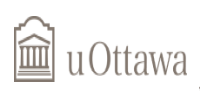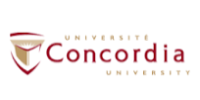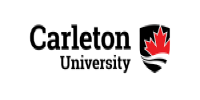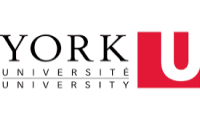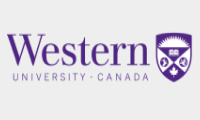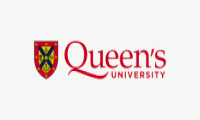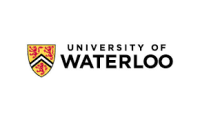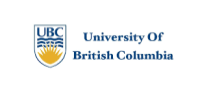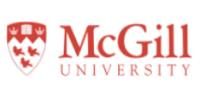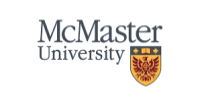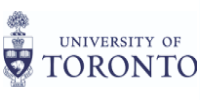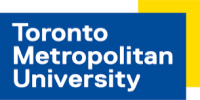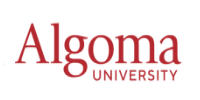BBI2O Introduction to Business Grade 10
Course Title: Introduction to Business, Grade 10
Course Code: BBI2O
Grade: 10
Course Type: Open
Credit Value: 1.0
Prerequisite: : None
Curriculum Policy Document: Business Studies, The Ontario Curriculum, Grades 9 and 10, 2006 (Revised)
Course Developer: Toronto eLearning School
Department: Business
Department Head: Erin Weir, B.A.(Hon), B.Ed., OCT
Developed Date: 2019
Most Recent Revised Date: 2022

Course Description :
BBI2O course introduces students to the world of business. Students will develop an understanding of the functions of business, including accounting, marketing, information and communication technology, human resources, and production, and of the importance of ethics and social responsibility. This course builds a foundation for further studies in business and helps students develop the business knowledge and skills they will need in their everyday lives.
| Unit | Unit Titles and Descriptions | Time and Sequence |
|---|---|---|
| 1 | Introduction to BBI2O; Business Fundamentals By the end of this unit, students will:
|
30 hours |
| 2 | Functions of Business By the end of this unit, students will:
|
28 hours |
| 3 | Finance By the end of this unit, students will:
|
22 hours |
| 4 | Entrepreneurship By the end of this unit, students will:
|
27 hours |
| Final Exam | 3 hours | |
| Total | 110 hours |
Overall Expectations: BBI2O
All course material is online, no textbook purchase required. Resources and references for course materials will be provided on course webpage. Students are expected to watch and read all lecture videos and reading materials provided, and complete relevant exercises at student’s time of continence.
| A. Business Fundamentals By the end of this course, students will: . demonstrate an understanding of how businesses respond to needs, wants, supply, and demand; . compare types of businesses; . demonstrate an understanding of ethics and social responsibility in business; . demonstrate an understanding of the benefits and challenges for Canada in the field of international business. B. Functions of a Business By the end of this course, students will: . explain the role of production in business; . explain the role of human resources in business; . demonstrate an understanding of sound management practices in business; . demonstrate an understanding of the importance and role of marketing in business; . demonstrate an understanding of the importance and role of accounting in business; . demonstrate an understanding of the importance and role of information and communication technology in business. C. Finance By the end of this course, students will: . demonstrate an understanding of income and spending issues facing individuals and businesses; . demonstrate an understanding of how banks and other financial institutions operate; . demonstrate an understanding of effective investment practices; . analyse the role and importance of credit in personal and business finance. D. Entrepreneurship By the end of this course, students will: . describe characteristics and skills associated with successful entrepreneurs and demonstrate an understanding of the contributions to Canadian business of selected entrepreneurs; . analyse the importance of invention and innovation in entrepreneurship. |
Achievement Chart – Business Studies, Grades 9–12
| Categories | 50-59% (Level 1) | 60-69% (Level 2) | 70-79% (Level 3) | 80-100% (Level 4) |
| Knowledge and Understanding – Subject-specific content acquired in each course (knowledge), and the comprehension of its meaning and significance (understanding) | ||||
| The student: | ||||
| Knowledge of content (e.g., facts, terms, definitions, procedures) | demonstrates limited knowledge of content | demonstrates some knowledge of content | demonstrates considerable knowledge of content | demonstrates thorough knowledge of content |
| Understanding of content (e.g., concepts, principles, theories, relationships. method-ologies and/or technologies) | demonstrates limited understanding of content | demonstrates some understanding of content | demonstrates considerable understanding of content | demonstrates thorough and insightful understanding of content |
| Thinking – The use of critical and creative thinking skills and/or processes | ||||
| The student: | ||||
| Use of planning skills (e.g.. focusing research, gathering information, selecting strategies, organizing a project) | uses planning skills with limited effectiveness | uses planning skills with moderate effectiveness | uses planning skills with considerable effectiveness | uses planning skills with a high degree of effectiveness |
| Use of processing skills (et, analysing, inter-preting, assessing, reasoning, generating ideas, evaluating, integrating, synthesizing, seeking a variety of perspectives, forming conclusions) | uses processing skills with limited effectiveness | uses processing skills with some effectiveness | uses processing skills with considerable effectiveness | uses processing skills with a high degree of effectiveness |
| Use of critical/creative thinking processes (e.g.. evaluation of business situations. problem solving, deci-sion making, detecting bias, research) | uses critical / creative thinking processes with limited effectiveness | uses critical / creative thinking processes with some effectiveness | uses critical / creative thinking processes with considerable effectiveness | uses critical / creative thinking processes with a high degree of effectiveness |
| Communication – The conveying of meaning through various forms | ||||
| The student: | ||||
| Expression and organization of ideas and information (e.g., clear expression, logical orga-nization) in oral, visual, and written forms. including electronic forms (e.g., presenta-tions, charts, graphs, tables, maps, models, web pages, spreadsheets, flyers, financial statements, letters, memos, reports) | expresses and organizes ideas and information with limited effectiveness | expresses and organizes ideas and information with some effectiveness | expresses and organizes ideas and information with considerable effectiveness | expresses and organizes ideas and information with a high degree of effectiveness |
Note:A student whose achievement is below 50% at the end of a course will not obtain a credit for the course.
Resources required by students
- Access to BBI2O online course of study
- Access to a scanner or digital camera
- Access to a spreadsheet and word-processing software
- Access to Youtube
Reference Texts Note: This course is entirely online and does not require or rely on any textbook. Should students wish to seek additional information we would recommend these texts: The World of Business. 5th Edition. Nelson Education (2007) Guest, Lorie, Notman, David and Wilson, Jack Nelson Education Canada http://www.nelsonschoolcentral.com/ ISBN/ISSN: 0176337512
Program Planning Considerations
Teachers who are planning a program in this subject will make an effort to take into account considerations for program planning that align with the Ontario Ministry of Education policy and initiatives in a number of important areas:
- Education for students with special education needs
- Environmental education
- Equity and inclusive education
- Financial literacy education
- Ontario First Nations, Metis, and Inuit education
- Role of information and communications technology
- English language learners
- Career education
- Cooperative education and other workplace experiences
- Health and safety
1. Education for Students with Special Education Needs:
Toronto eLearning School is committed to ensuring that all students are provided with the learning opportunities and supports they require to gain the knowledge, skills, and confidence they need to succeed in a rapidly changing society. The context of special education and the provision of special education programs and services for exceptional students in Ontario are constantly evolving. Provisions included in the Canadian Charter of Rights and Freedoms and the Ontario Human Rights Code have driven some of these changes. Others have resulted from the evolution and sharing of best practices related to the teaching and assessment of students with special educational needs.
The provision of special education programs and services for students at Toronto eLearning School rests within a legal framework The Education Act and the regulations related to it set out the legal responsibilities pertaining to special education. They provide comprehensive procedures for the identification of exceptional pupils, for the placement of those pupils in educational settings where the special education programs and services appropriate to their needs can be delivered, and for the review of the identification of exceptional pupils and their placement.
Teachers will take into account the needs of exceptional students as set out in the students’ Individual Education Plan. The online courses offer a vast array of opportunities for students with special educations needs to acquire the knowledge and skills required for our evolving society. Students who use alternative techniques for communication may find a venue to use these special skills in these courses. There are a number of technical and learning aids that can assist in meeting the needs of exceptional students as set out in their Individual Education Plan. In the process of taking their online course, students may use a personal amplification system, tela-typewriter (via Bell relay service), an oral or a sign-language interpreter, a scribe, specialized computer programs, time extensions, ability to change font size, oral readers, etc.
2. Environmental Education:
Environmental education teaches students about how the planet’s physical and biological systems work, and how we can create a more sustainable future. Good curriculum design allows environmental issues and topics to be woven in and out of the online course content. This ensures that the student will have opportunities to acquire the knowledge, skills, perspectives and practices needed to become an environmentally literate citizen. The online course should provide opportunities for each student to address environmental issues in their home, in their local community, or even at the global level. 3. Equity and Inclusive Education:
Toronto eLearning School is taking important steps to reduce discrimination and embrace diversity in our online school in order to improve overall student achievement and reduce achievement gaps due to discrimination. The Ontario Equity and Inclusive Education Strategy was launched in April 2009 and states that all members of the Toronto eLearning School community are to be treated with respect and dignity. This strategy is helping TES educators better identify and remove discriminatory biases and systemic barriers to student achievement. These barriers related to racism, sexism, homophobia and other forms of discrimination may prevent some students from reaching their full potential. The strategy supports the Ministry’s key education priorities of high student achievement, reduced gaps in student achievement and increased accountability and public confidence in Ontario’s schools. Students, regardless of their background or personal circumstances, must be given every opportunity to reach their full potential. Research shows that when students feel welcomed and accepted in their school, they are more likely to succeed academically. Toronto eLearning School desires to create a culture of high expectations where factors such as race, age, gender, sexual orientation and socio-economic status do not prevent students from achieving ambitious outcomes.
4. Financial Literacy Education:
Financial literacy may be defined as having the knowledge and skills needed to make responsible economic and financial decisions with competence and confidence. Since making financial decisions has become an increasingly complex task in the modern world, students need to have knowledge in various areas and a wide range of skills in order to make informed decisions about financial matters. Students need to be aware of risks that accompany various financial choices. They need to develop an understanding of world economic forces as well as ways in which they themselves can respond to those influences and make informed choices. Toronto eLearning School considers it essential that financial literacy be considered an important attribute of a well-educated population. In addition to acquiring knowledge in such specific areas as saving, spending, borrowing, and investing, students need to develop skills in problem solving, inquiry, decision making, critical thinking, and critical literacy related to financial and other issues. The goal is to help students acquire the knowledge and skills that will enable them to understand and respond to complex issues regarding their own personal finances and the finances of their families, as well as to develop an understanding of local and global effects of world economic forces and the social, environmental, and ethical implications of their own choices as consumers. The Ministry of Education and Toronto eLearning School are working to embed financial literacy expectations and opportunities in all courses as appropriate, as part of the ongoing curriculum review process.
5. Ontario First Nations, Metis, and Inuit Education:
First Nation, Metis, and Inuit students in Ontario will need to have the knowledge, skills, and confidence they need to successfully complete their elementary and secondary education in order to pursue postsecondary education or training and/or to enter the workforce. They will need to have the traditional and contemporary knowledge, skills, and attitudes required to be socially contributive, politically active, and economically prosperous citizens of the world. All students in Ontario will need to have knowledge and appreciation of contemporary and traditional First Nation, Metis, and Inuit traditions, cultures, and perspectives. Toronto eLearning School and the Ministry of Education are committed to First Nation, Metis, and Inuit student success. TES teachers are committed to (1) developing strategies that will increase the capacity of the education system to respond to the learning and cultural needs of First Nation, Metis, and Inuit students; (2) providing quality programs, services, and resources to help create learning opportunities for First Nation, Metis, and Inuit students that support improved academic achievement and identity building; (3) providing a curriculum that facilitates learning about contemporary and traditional First Nation, Metis, and Inuit cultures, histories, and perspectives among all students where possible; and (4) developing and implementing strategies that facilitate increased participation by First Nation, Metis, and Inuit parents, students, communities, and organizations in working to support the academic success of the student. 6. The Role of Information and Communications Technology in the Curriculum.
Information literacy is the ability to access, select, gather, critically evaluate, and create information. Communication literacy refers to the ability to communicate information and to use the information obtained to solve problems and make decisions. Information and communications technologies are utilized by all TES students when the situation is appropriate within their online course. As a result, students will develop transferable skills through their experience with word processing, internet research, presentation software, and telecommunication tools, as would be expected in any other course or any business environment.
7. English Language Learners:
This Toronto eLearning School online course can provide a wide range of options to address the needs of ESL/ELD students. This online course must be flexible in order to accommodate the needs of students who require instruction in English as a second language or English literacy development. The TES teacher considers it to be their responsibility to help students develop their ability to use the English language properly. Appropriate modifications to teaching, learning, and evaluation strategies in this course may be made in order to help students gain proficiency in English, since students taking English as a second language at the secondary level have limited time in which to develop this proficiency. This online course can provide a wide range of options to address the needs of ESL/ELD students. Well written content will aid ESL students in mastering not only the content of this course, but as well, the English language and all of its idiosyncrasies. Toronto eLearning School has created course content to enrich the student’s learning experience. In addition, since many occupations in Canada require employees with capabilities in the English language, many students will learn English language skills which can contribute to their success in the larger world.
8. Career Education:
As the online student progresses through their online course, their teacher is available to help the student prepare for employment in a huge number of diverse areas. With the help of their teacher, students will learn to set and achieve goals and will gain experience in making meaningful decisions concerning their career choices. The skills, knowledge and creativity that students acquire through this online course are essential for a wide range of careers. Throughout their secondary school education, students will learn about the educational and career opportunities that are available to them; explore and evaluate a variety of those opportunities; relate what they learn in their courses to potential careers in a variety of fields; and learn to make appropriate educational and career choices.
9. Cooperative Education and Other Workplace Experiences:
By applying the skills they have developed, students will readily connect their classroom learning to real-life activities in the world in which they live. Cooperative education and other workplace experiences will broaden their knowledge of employment opportunities in a wide range of fields. In addition, students will increase their understanding of workplace practices and the nature of the employer-employee relationship. TES teachers will try to help students link to Ministry programs to ensure that students have information concerning programs and opportunities.
10. Health and Safety:


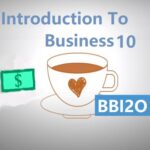
 "Hey, Rebecca, Thank you so much for your help. I don't think there is anyone in education who helped me more than you.
I got the final confirmation email and finally got into McMaster thank you for all your help.
I owe my success in university admission to you and Toronto eLearning School."
Hadi Khan, Life Science in McMaster University
"Hey, Rebecca, Thank you so much for your help. I don't think there is anyone in education who helped me more than you.
I got the final confirmation email and finally got into McMaster thank you for all your help.
I owe my success in university admission to you and Toronto eLearning School."
Hadi Khan, Life Science in McMaster University "My name is Kasra Zarbakhsh in Iran. I enjoyed my study at Toronto eLearnihng School with the kind staff. I suggest studying at eLearning School for those International or Canadian students who want to earn the OSSD.
I earned eight credits with eLearning School, got two university offers, and got an OSSD.
Warm regards to Principal & Vice-Principal of Toronto eLearning School, Mr. Bowyer & Ms. Wang."
Kasra Zarbakhsh, Business Administration of Legal Studies in Trent University.
"My name is Kasra Zarbakhsh in Iran. I enjoyed my study at Toronto eLearnihng School with the kind staff. I suggest studying at eLearning School for those International or Canadian students who want to earn the OSSD.
I earned eight credits with eLearning School, got two university offers, and got an OSSD.
Warm regards to Principal & Vice-Principal of Toronto eLearning School, Mr. Bowyer & Ms. Wang."
Kasra Zarbakhsh, Business Administration of Legal Studies in Trent University. "Hello miss, I have got my marks. Thank you so much at the end. you helped me a lot with this course. Your feedbacks were very effective to me.
I got many experiences with this. I really appreciate your kindness to refer my mails and reply them all and give feedbacks for my resubmitted assignments as well.
Lucky to have a teacher like you miss. Thank you so much and wish your future works with my best."
Naveen Srimal Kandamulla, Medicine in Manipal Medical University
"Hello miss, I have got my marks. Thank you so much at the end. you helped me a lot with this course. Your feedbacks were very effective to me.
I got many experiences with this. I really appreciate your kindness to refer my mails and reply them all and give feedbacks for my resubmitted assignments as well.
Lucky to have a teacher like you miss. Thank you so much and wish your future works with my best."
Naveen Srimal Kandamulla, Medicine in Manipal Medical University I am writing to express my deepest gratitude for your unwavering support and guidance throughout my academic journey with eLearning School.
Your dedication and expertise have been instrumental in my success in the course, and I cannot thank you enough for your invaluable contributions.
Thank you for being an exceptional educator at eLearning School and for making a positive impact on my life. I wish you continued success and fulfillment in your teaching career.
With utmost respect and gratitude, Zaid Hassan
I am writing to express my deepest gratitude for your unwavering support and guidance throughout my academic journey with eLearning School.
Your dedication and expertise have been instrumental in my success in the course, and I cannot thank you enough for your invaluable contributions.
Thank you for being an exceptional educator at eLearning School and for making a positive impact on my life. I wish you continued success and fulfillment in your teaching career.
With utmost respect and gratitude, Zaid Hassan "Dear Rebecca, Thank you very much for attaching Michael's OSSD and transcript.
Michael has received all his offers from Ryerson University, York University, University of Toronto and Mississauga, U of T.
We would also like to thank you for your wishes. We are very proud of Michael and his accomplishments! Thank you once again."
Anna k., ASSISTANT REGISTRAR, VICTORIA COLLEGE IN THE UNIVERSITY OF TORONTO
"Dear Rebecca, Thank you very much for attaching Michael's OSSD and transcript.
Michael has received all his offers from Ryerson University, York University, University of Toronto and Mississauga, U of T.
We would also like to thank you for your wishes. We are very proud of Michael and his accomplishments! Thank you once again."
Anna k., ASSISTANT REGISTRAR, VICTORIA COLLEGE IN THE UNIVERSITY OF TORONTO "Dear Rebecca, hope you are doing well.
I am taking this opportunity to thank you so much for the accompaniment, advise and the push done on Williane 's during her studies at Toronto eSchool. It was so benefic to her as now, she fitted very well into the University system... she started with 2 courses and has succeeded with a grade of B+ and A.... she promised to get A+ moving forward... at least, she started with good marks compared the way I was so so much worried about her performance. I have a confident she will be able to finish her studies withing the 4 academic years.
Again, find my sincere gratitude for the journey and support from your side; I will never forget about your advise, push, reminders, mails.... All to get Williane succeed her Grade 12. You are very professional and I m thank God I found a such professional and parent teacher. Remain blessed."
Honorine N., Procurement Manager, United Nations Children's Fund (UNICEF)
"Dear Rebecca, hope you are doing well.
I am taking this opportunity to thank you so much for the accompaniment, advise and the push done on Williane 's during her studies at Toronto eSchool. It was so benefic to her as now, she fitted very well into the University system... she started with 2 courses and has succeeded with a grade of B+ and A.... she promised to get A+ moving forward... at least, she started with good marks compared the way I was so so much worried about her performance. I have a confident she will be able to finish her studies withing the 4 academic years.
Again, find my sincere gratitude for the journey and support from your side; I will never forget about your advise, push, reminders, mails.... All to get Williane succeed her Grade 12. You are very professional and I m thank God I found a such professional and parent teacher. Remain blessed."
Honorine N., Procurement Manager, United Nations Children's Fund (UNICEF)